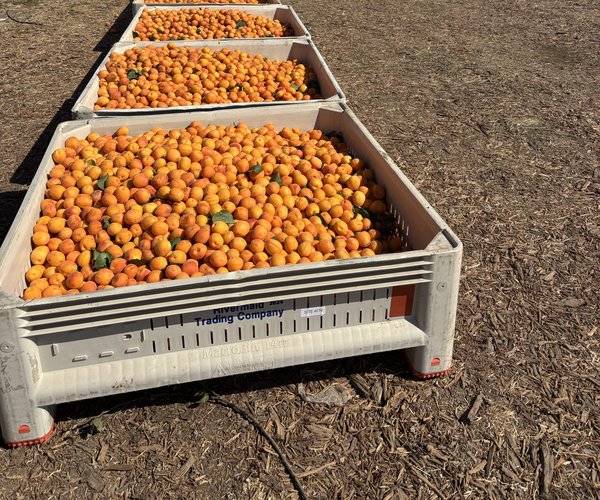Turlock and the other cities in Stanislaus County continue to score poorly in the American Lung Association's annual report measuring the state of tobacco control.
The American Lung Association’s State of Tobacco Control 2017 – California Local Grades report, gave Stanislaus County cities “D” and “F” grades for implementing and continuing key tobacco control policies. The report gave Turlock, Hughson and Riverbank “D” grades, and Modesto, Ceres, Waterford, Patterson, Newman, Oakdale and unincorporated areas of the county all had “F” grades.
Turlock’s move in 2015 to include electronic cigarettes in the smoking ban in public parks earned the city some points with the ALA, as did the smoking restrictions at common areas of housing units. Turlock, Modesto and Hughson were the first cities in Stanislaus County to regulate the use of electronic cigarettes.
All the cities in Stanislaus County, except Riverbank, got F grades for failing to enact measures that reduce tobacco sales in the region. Riverbank got an A grade for restricting where cigarettes can be sold.
At the state level the ALA praised California for being one of the most improved states in 2016. The report shows California led the way on tobacco policies in the past year, while many other states and the federal government continue to lag behind.
“In 2016, Californians fought back against Big Tobacco’s grip on our state,” said David Pogue, chair of the American Lung Association in California Governing Board. “Tobacco-related illnesses remain the single most preventable cause of disease and death in California and we’re proud to reaffirm ourselves as a national leader in the effort to reduce smoking rates and exposure to secondhand smoke and to protect our children from a lifetime of addiction.”
The ALA said California’s grades in the State of Tobacco Control 2017 report improved thanks to strong policies passed by the Legislature and signed by Gov. Jerry Brown in 2016 including raising the minimum age to purchase tobacco products to 21, regulating e-cigarettes the same as other tobacco products and strengthening workplace smokefree laws. Additionally, voters passed Proposition 56 in November, which raises the tax on a pack of cigarettes by $2 to $2.87 per pack beginning in April 2017.
California got an A for smokefree air policies, a B for tobacco taxes, a B for minimum age requirements, an incomplete for funding of tobacco prevention programs because Prop 56 fees have not yet been collected, and a F for coverage and access to tobacco cessation programs.
For the first time in the history of the report, more than 20 cities and counties received an overall A grade for their tobacco control policies. Additionally, this year’s report saw 12 fewer F grades handed out.
While the number of F grades continues to steadily decline, more than 50 percent of California’s population still live in communities scoring a D or F. This includes nearly half of the 10 most populous cities in the state. None of the top 10 most populous cities have an A grade, and none of them passed tobacco control policies in 2016.
“It is unacceptable that some of California’s largest cities continue to lag behind when it comes to preventing teens from smoking and ensuring public spaces can be enjoyed without the threat of secondhand smoke exposure,” said Olivia Diaz-Lapham, President and CEO of the American Lung Association in California. “Strong policies in our major cities, which are home to millions of people, would have significant public health benefits. We call on local officials in California’s largest cities to step up efforts to fight back against tobacco.”
Within the categories of the scored report, Turlock received a D for smokefree air policies, a D for smokefree housing, and a F for reducing sales of tobacco products.
The grades come as new research shows that Stanislaus County is doing poorly when it comes to preventing the availability and marketing of tobacco products, alcohol, condoms and healthy and unhealthy food options in stores. The study, Healthy Stores for a Healthy Community, is a statewide campaign formed by tobacco prevention, nutrition, alcohol abuse prevention and STD prevention partners collaborating to improve the health of Californians. One of the major goals of this research was to examine the accessibility and marketing of healthy and unhealthy products to youth.
Information was collected in the summer of 2016 from more than 7,100 stores in all 58 California counties including pharmacies, supermarkets, delis, convenience and liquor stores as well as tobacco-only stores. Over 140 stores were surveyed in Stanislaus County.
“Overall, the findings show a continuing and alarming discrepancy in our county between the accessibility and marketing of products that promote a healthy lifestyle, and those that don’t,” said Dr. Anuj Bhatia, of the Stanislaus County Health Services Agency Public Health Division. “We found that unhealthy products like tobacco and alcohol are more readily available than healthy items like fruits, vegetables and low- or non-fat dairy products. Stores play a critical role on our community’s health, and this survey shows that offerings and messaging are out of balance, tipping heavily toward unhealthy options. Our goal is to help re-calibrate the balance toward health.”
The survey found the following for Stanislaus County:
Nearly half (48.3 percent) of surveyed stores place tobacco products or ads in kid-friendly locations, such as tobacco ads at three feet or below or tobacco products near candy or toys. Among stores located near schools, 72.2 percent market tobacco in these kid-friendly locations. Only about one in 10 stores in Stanislaus County (11.5 percent) advertised healthy products on their storefronts, but eight in ten (81.6 percent) storefronts advertised unhealthy products. Stores near schools had even more unhealthy ads, with 88.9 percent displaying unhealthy storefront advertising. Nine in 10 stores (90.8 percent) sell flavored non-cigarette tobacco products, which often have kid-appealing flavors such as grape, watermelon, chocolate, gummy candies and even breakfast cereals. All of the stores surveyed near schools in Stanislaus County sell these candy-flavored tobacco products. Only 27.6 percent of stores sell non- or low-fat milk and 37.9 percent had any fresh fruits and vegetables, but nearly 84 percent sell alcohol.
“This survey found that our community’s youth are inundated with unhealthy messages and choices, particularly near their schools. We need to change what information and options our kids are exposed to and work to surround them with healthy choices and messaging instead,” said Bhatia.









